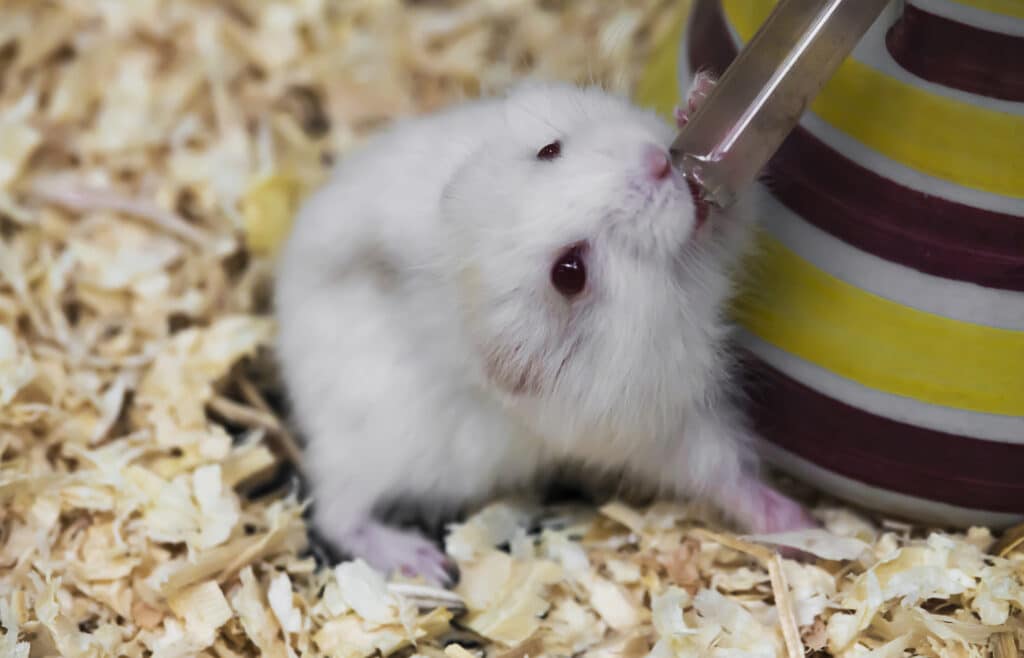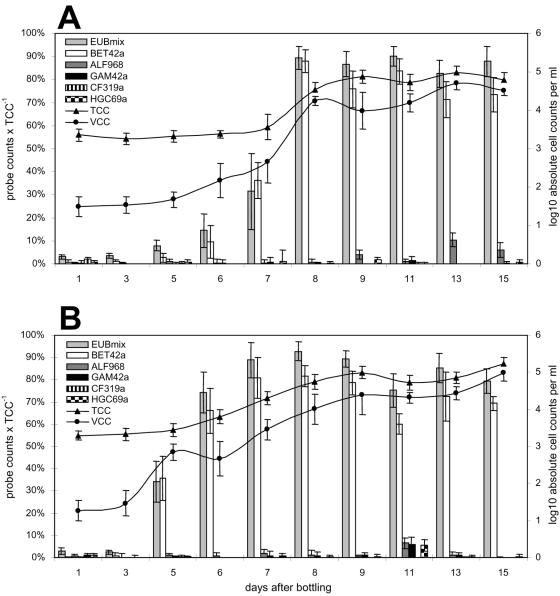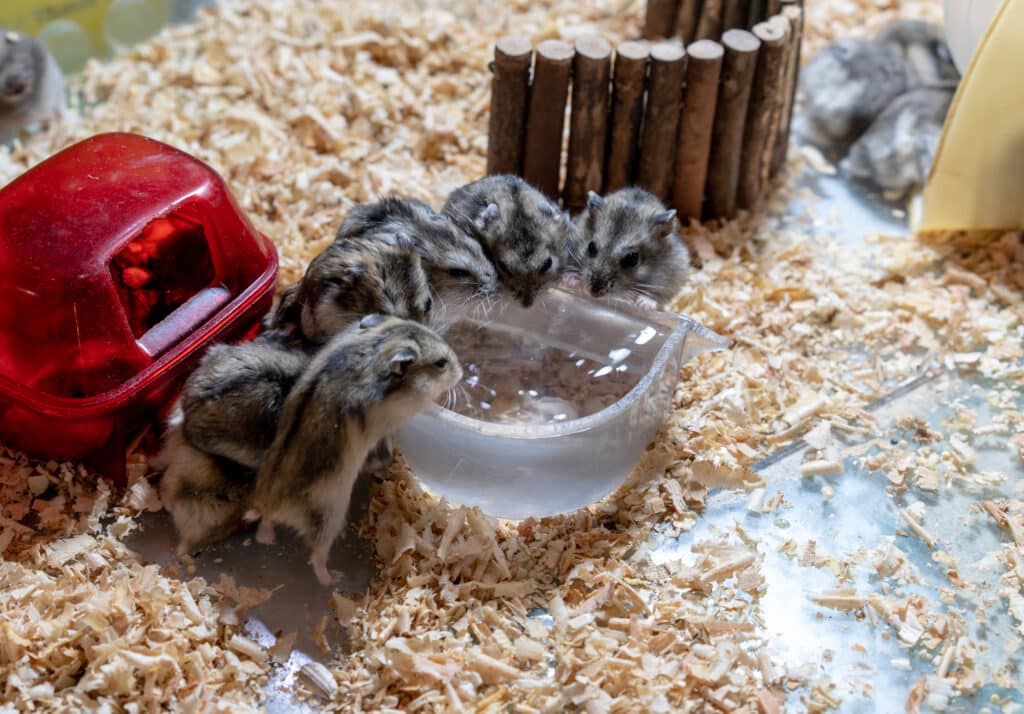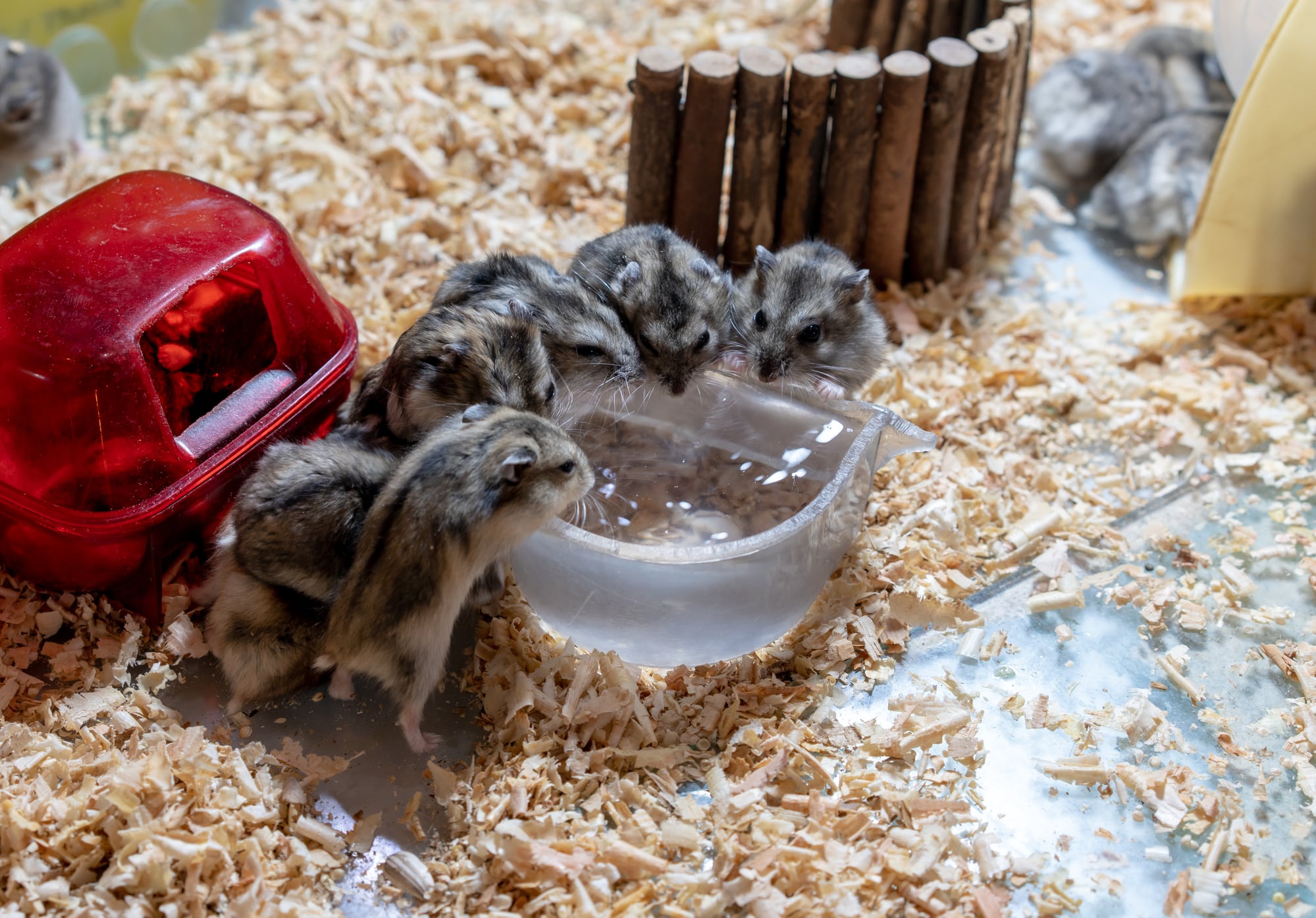Like any animal, hamsters, too, need uninterrupted access to water to survive. But how much water do hamsters drink? Do they need a lot of water? Read this blog post to find out.
Why does your hamster need water?
You already know hamsters (as every other animal) need water to survive. But do you know why they need it? Let’s find out.
- Water plays an important role in the digestion of food your hamster eats. It also helps your hamster’s body absorb nutrients like carbohydrates, proteins, and fats.
- Water helps remove toxic metabolic products like urea from your hamster’s body. So, a lack of water can have immediate and drastic effects on your furry friend’s health.
- Milk is almost 80% water. So, lactating hamsters need to intake more water.
- In many animals, water also helps regulate their body temperatures through sweat, saliva, etc. But hamsters do not have sweat glands. So, water doesn’t play a major role in regulating a hamster’s body temperature as in humans and many other animals.
How much water do hamsters drink?

Different hamster species drink different amounts of water per day. In laboratory studies, the following details were observed (Source: National Library of Medicine):
- Male Syrian hamsters drank 5 milliliters of water/100g of body weight on average.
- Female hamsters (Syrian) drank 14mL of water/100g of body weight on average.
- Male Chinese hamsters drank 11.4mL of water/100g of body weight on average.
- Female hamsters (Chinese) drank 12.9mL of water/100g of body weight on average.
So, the average amount of water hamsters drink was calculated to be about 8.5ml of water/day for every 100g of body weight. Since the amount of water a hamster drinks is calculated based on its body weight, this can be used for all hamster species.
However, this formula holds good only to a certain extent; it does not hold good 100%.
How to monitor your hamster’s water intake?
If you want to find out how much water your hamster drinks every day, you have to perform the following steps:
1. Buy a hamster water bottle with milliliter markings (You can also draw the millimeter markings yourself using a permanent marker if the water bottle doesn’t have any millimeter markings. For this purpose, you can use a jug with milliliter markings to pour measured amounts of water into the water bottle).
2. Once every 24 hours, find out how much the water level has gone down. This will tell you how much water your hamster has consumed in the last 24 hours. Always check the bedding under the water bottle. If the water bottle is leaking, the bedding will be wet. In this case, you cannot trust the readings on the water bottle. So, first, make sure that the water bottle doesn’t leak.
3. Do this for several days, and then find the average amount of water your hamster drinks in a day.
4. If your hamster suddenly starts drinking too less or too much water compared to the daily average, then it could mean that your hamster is sick. Look for other symptoms that can help identify your hamster’s health issue. Take him to a veterinary doctor if needed.
How often must you change the water in your hamster’s water bottle or bowl?
More than 5 million people die every year due to waterborne diseases. If the bodies of big mammals like humans are not equipped to protect against waterborne diseases, the bodies of hamsters are definitely not capable of doing that.
Moreover, bacteria and viruses can reproduce quickly.
Consider the bacterium E. coli for example. It is a bacterium that lives in the intestines of humans and other animals. It helps us digest the food we eat. However, some strains of E. coli are dangerous and can cause headaches, fever, diarrhea, etc. (Source: Cleveland Clinic). E. coli can reproduce every 20 minutes. At that rate, just one parent E. coli cell will transform into two million E. coli cells in just 7 hours.
However, it is important to know that water isn’t the only thing that bacteria need to grow. Bacteria need the following components to grow (Source: Department of Food and Nutrition Services, University of Iowa):
1. Food
2. Oxygen
3. The right temperature
4. Water that is pH neutral or slightly acidic
Similarly, fungi also need food, water, and the right temperature to grow (Source: Intech Open). Most fungi need oxygen, while some don’t.
On the other hand, viruses need a host cell to survive (Can be from you, your hamster, or a bacteria).
A scientific study was conducted to find out how fast bacteria grew in bottled mineral water by observing their growth for two weeks. The study found that the number of living bacteria (labeled as VCC – Viable Cell Count – in the graph below) in bottled water remained at around 50 viable (alive) cells per milliliter for three days. Then, between days 3 and 8, it increased to more than 10,000 viable cells per milliliter. [Please note that the number of bacteria (y axis right side) is plotted in the logarithmic scale indicating the power of 10, i.e., 1 = 10, 2 = 10, 3 = 1000, etc.]

It is also interesting to note that in smaller water bottles (graph B), bacteria grew rapidly between days 3 and 5, probably indicating that the growth of bacteria speeds up if there is only little water available. So, since the water bottle or bowl you keep in your hamster cage is pretty small, bacteria could grow even more rapidly (This is just my guess, though, but it makes sense to me). Also read: Can hamsters drink out of a bowl?
Hence, it is important to change the water in your hamster water bottle or water bowl at least once a day.
But just changing the water once a day is not sufficient. It is also important to give your hamster clean water that is safe to drink. To find out which water is safe for your hamster to drink, read this blog post: Can hamsters drink tap water?
Conclusion
Hamsters drink less than one tablespoon of water per 100g of body weight per day. So, your hamster needs uninterrupted access to fresh water at all times every day. But that doesn’t mean you can just fill a bottle full of water and keep it in your hamster’s cage and forget about it for a week.
Bacteria and viruses can build up in the water in water bottles quickly. So, even though it might be tempting to replace the water in the bottle only once a week or so because your hamster doesn’t drink much water, you should actually change it as often as possible, at least once a day.



